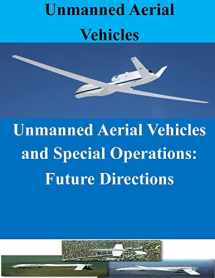
Unmanned Aerial Vehicles and Special Operations: Future Directions
ISBN-13:
9781519686879
ISBN-10:
1519686870
Author:
Penny Hill Press, Naval Postgraduate School
Publication date:
2015
Publisher:
CreateSpace Independent Publishing Platform
Format:
Paperback
108 pages
FREE US shipping
Book details
ISBN-13:
9781519686879
ISBN-10:
1519686870
Author:
Penny Hill Press, Naval Postgraduate School
Publication date:
2015
Publisher:
CreateSpace Independent Publishing Platform
Format:
Paperback
108 pages
Summary
Unmanned Aerial Vehicles and Special Operations: Future Directions (ISBN-13: 9781519686879 and ISBN-10: 1519686870), written by authors
Penny Hill Press, Naval Postgraduate School, was published by CreateSpace Independent Publishing Platform in 2015.
With an overall rating of 4.0 stars, it's a notable title among other
books. You can easily purchase or rent Unmanned Aerial Vehicles and Special Operations: Future Directions (Paperback) from BooksRun,
along with many other new and used
books
and textbooks.
And, if you're looking to sell your copy, our current buyback offer is $0.34.
Description
Advances in computing, miniaturization, imaging, and data transmission technologies are precursors to a more important role for UAVs in warfare. UAVs are likely, first, to revolutionize the way reconnaissance and surveillance are conducted, second, to increase the capabilities of small units, third, to join manned platforms in the conduct of assault and attack missions, and finally help provide the numerous nodes necessary to facilitate both the digital connectivity and swarming forces envisioned in future networkcentric formations. This book focuses on answering six questions: -What missions can UAVs perform? -What missions should UAVs perform? -What type ofUAV is appropriate for each mission? -How can SOF use UAVs? -Who should own the UAV (from a SOF perspective)? -What level of control is required and where? Results include what UAV missions and types could support special operations, which of these should be performed by UAVs organic to special operations, and which should be performed by the Services' UAVs, as well as recommendations for future command and control of UAVs supporting special operations. Results are presented in matrix form for easy correlation of related factors. The thesis concludes with a twenty-year prognostication of UAV development and recommends areas for future study.


We would LOVE it if you could help us and other readers by reviewing the book
Book review

Congratulations! We have received your book review.
{user}
{createdAt}
by {truncated_author}


